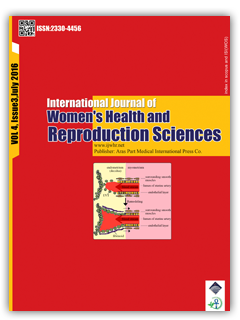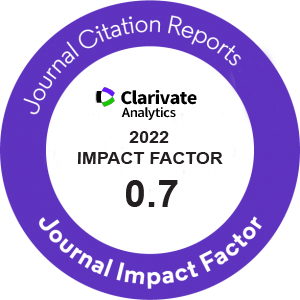| Original Article | |
| Fetal Arrhythmias and Related Fetal and Neonatal Outcomes | |
| Fatemeh Abbasalizadeh1, Shamsi Abbasalizadeh1, Shamsi Ghaffari2, Rabee Hesami3, Leyla Hesmai1 | |
| 1Women?s Reproductive Health Research Center, Tabriz University of Medical Sciences, Tabriz, Iran 2Cardiovascular Research Center, Tabriz University of Medical Sciences, Tabriz, Iran 3Urmia University of Medical Sciences, Urmia, Iran |
|
|
IJWHR 2016; 4: 130?133 DOI: 10.15296/ijwhr.2016.30 Viewed : 3470 times Downloaded : 3409 times. Keywords : Arrhythmia, Echocardiography, Fetal monitoring, Hydrops fetalis, Perinatal mortality |
|
| Full Text(PDF) | Related Articles | |
| Abstract | |
Objectives: Fetal cardiac arrhythmia has good prognosis. However, some can lead to hydrops fetalis and perinatal mortality. There are not sufficient studies on the prevalence and complications of fetal arrhythmias in Iran, thus, making parents anxious. Therefore, we performed this study to determine its proper management and to prevent its complications during pregnancy. Then we can help parents by giving them sufficient information about their fetal problem. Materials and Methods: This descriptive-analytic study included 81 pregnant women with fetal arrhythmia detected in routine monitoring. For cases, we performed fetal echocardiography. Data was analyzed by SPSS 20 (P < 0.05). Results: This study assessed the fetal period until 28 days after labor. Fetal arrhythmia was confirmed in 37 cases through echocardiography. The most prevalent arrhythmia was extrasystole with 27 cases (72.97%). Two cases with congenital heart disease experienced heart failure and hydrops fetalis and died in neonatal period and 25 cases survived. Eight cases had bradycardia including 5 with sinus bradycardia and 3 with atrioventricular block. Seven cases had congenital heart problems and 4 of them led to heart failure. Perinatal mortality was seen in six cases. Tachycardia was seen in two cases (5.4%) with no heart failure or hydrops fetalis. One case died of preterm delivery. Conclusion: Congenital heart disease is considered as an important risk, affecting fetal and neonatal outcome in fetuses with arrhythmias. As pregnancy advances, the frequency of arrhythmias decreased and converted to sinus rhythm. |
Cite By, Google Scholar
Google Scholar
PubMed
Online Submission System
 IJWHR ENDNOTE ® Style
IJWHR ENDNOTE ® Style
 Tutorials
Tutorials
 Publication Charge
Women's Reproductive Health Research Center
About Journal
Publication Charge
Women's Reproductive Health Research Center
About Journal
Aras Part Medical International Press Editor-in-Chief
Arash Khaki
Mertihan Kurdoglu Deputy Editor
Zafer Akan























